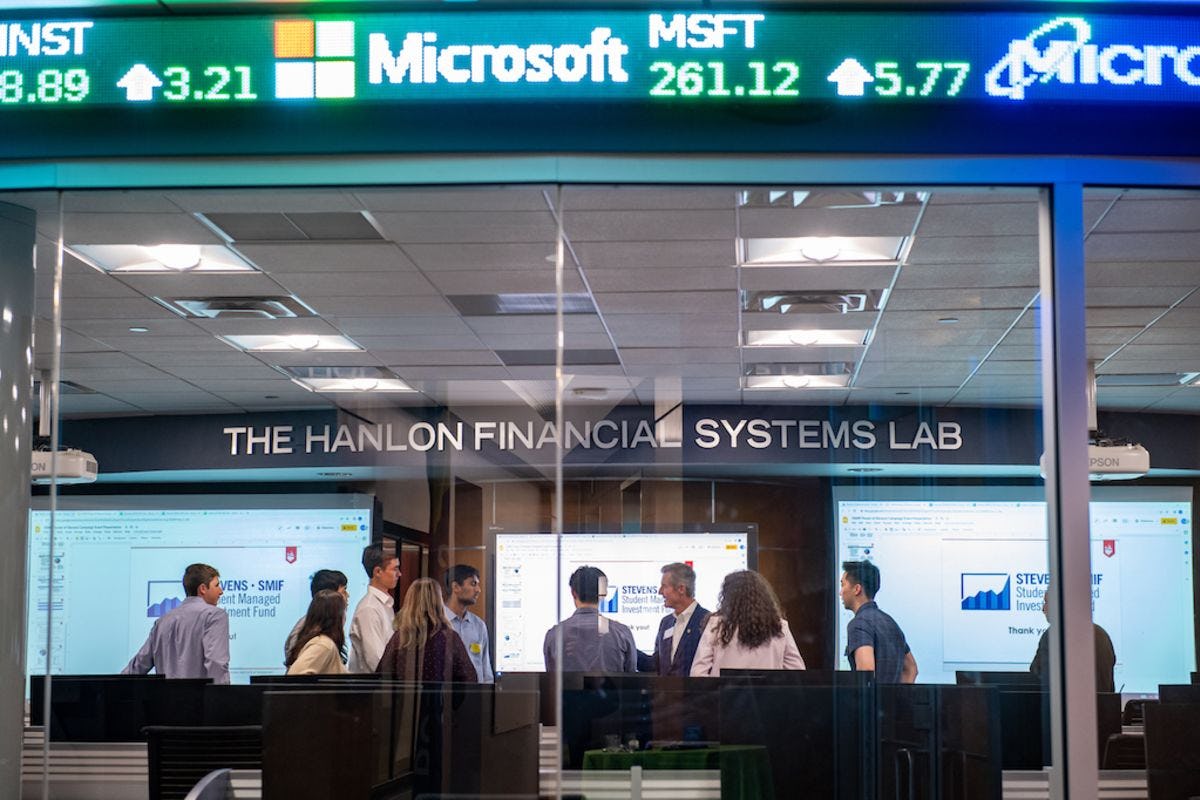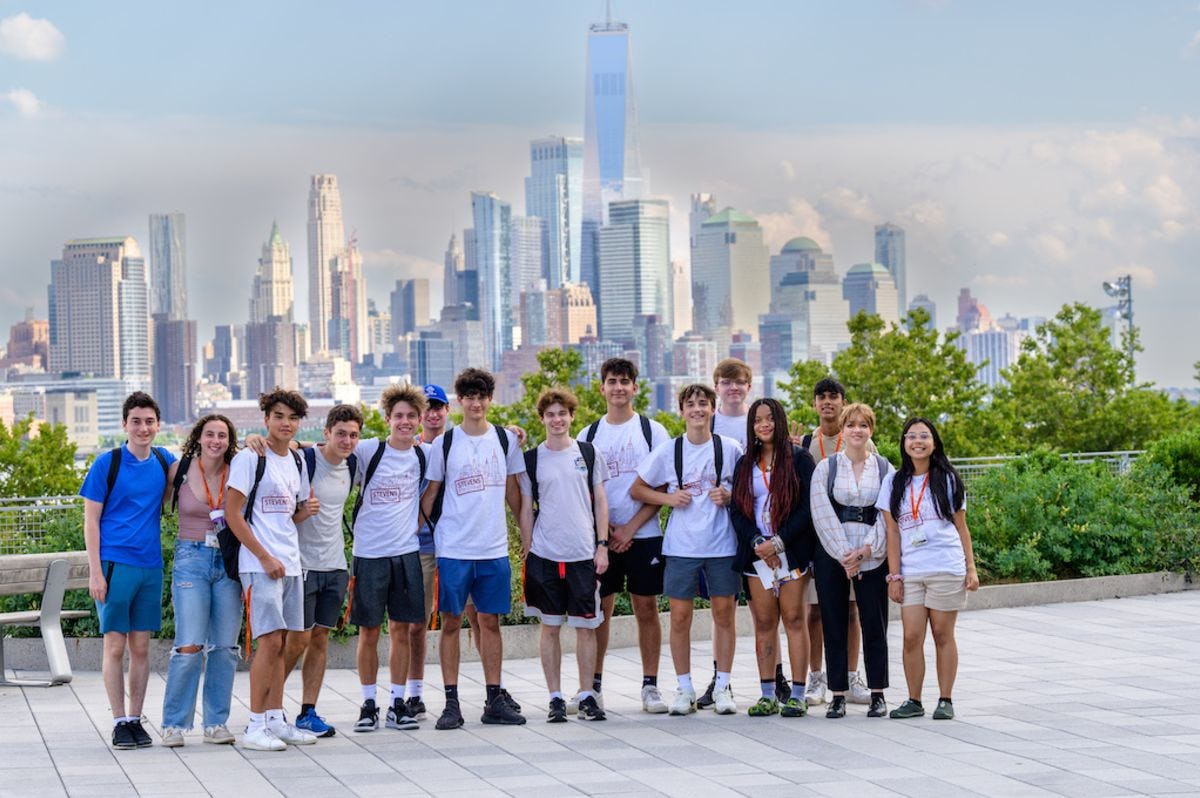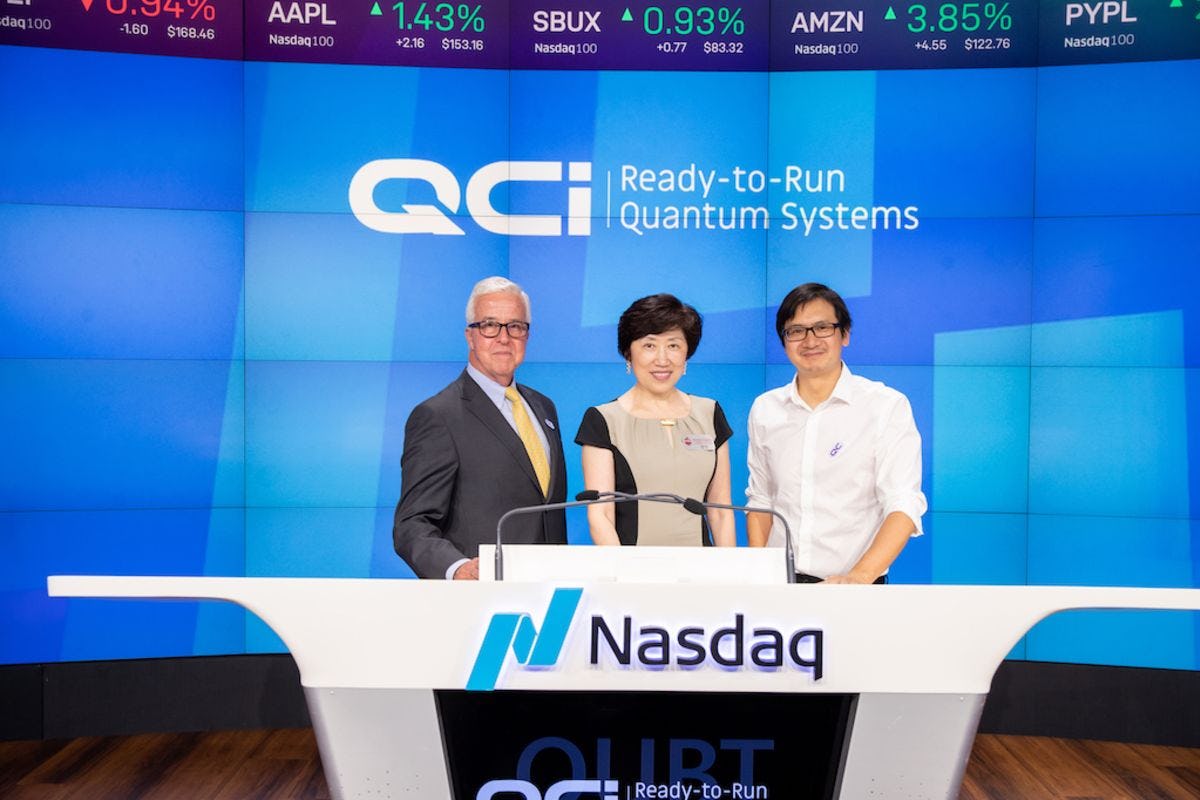Small but mighty, Stevens Institute of Technology is generating tech buzz — and leading major initiatives in research, curricula and diversity
Perched on the banks of the Hudson River, directly across from the lights of Manhattan, Stevens Institute of Technology is one of America’s oldest technological research universities — and also one of its fastest-rising.
The university has been innovating since it was founded in 1870 as the first U.S. school of mechanical engineering by the family of engineers who also developed the American steam train, steam ferry and railroad track.
Fast-forward 150 years: Today Stevens partners in education and research collaborations with Google, IBM, UBS, Princeton, MIT, Stanford, Caltech and numerous prestigious organizations — and, since 2011, has doubled its sponsored-research awards. The university’s leading quantum science researcher recently stood on the Nasdaq stage in Times Square to help ring the exchange’s closing bell, celebrating acquisition of a Stevens-affiliated quantum venture by a Nasdaq-listed quantum software leader.
Graduate and undergraduate applications, enrollment and admissions selectivity; research funding; the size of the faculty cohort; student diversity; and graduate outcomes have all reached historic high-water marks — even in a challenging post-pandemic environment.
“We have been punching above our weight for more than a decade,” notes President Nariman Farvardin, who has helmed Stevens since 2011. “We are tackling some of the most important and challenging problems of our time — in healthcare and medicine, brain research, artificial intelligence, cybersecurity, robotics, quantum science, financial technologies, renewable energy and more.”
“We are smaller than most national research universities, yet our impact is mighty.”
And that impressive rise now propels Stevens to lead a number of broad national initiatives that tap industry heavyweights and top academic institutions alike.
CRAFTing fintech for the future
Financial markets and operations have completely transformed during a digital era. In response, Stevens led the way by creating partnerships with global financial companies, government, higher education and tech leaders to develop new technologies that advance high-speed trading, market modeling and stress-testing, equities forecasting and financial cybersecurity.
In 2021, Stevens took another giant fintech step forward, creating and co-leading, with Rensselaer Polytechnic Institute, the Center for Research toward Advancing Financial Technologies. CRAFT is the first and only National Science Foundation–supported industry-university research center focused on fintech.
Powered by the university’s leading-edge Hanlon Financial Systems Center, CRAFT has already engaged global financial partners and funded early fintech research on questions such as the fairness of mortgage-lending decisions and the potential application of quantum technologies in the creation of automated portfolio management tools.
“This is more than an academic initiative,” says Steve Yang, CRAFT director. “CRAFT is a community of experts providing actionable insights to financial corporations and government agencies. And the CRAFT community is growing.”
Rebooting the traditional MBA
Stevens is also at the forefront of a new national push to modernize U.S. business-school curricula, including those created for MBA and management programs.
To do it, the university created and began leading an initiative known as MaCuDE (Management Curriculum for the Digital Era).
Working together with more than 100 partnering academic institutions — including prestigious business schools such as Wharton, Kellogg, USC, UC Berkeley, Baylor, Northeastern and University of Georgia — and with the generous financial and research support of the leading financial and consulting firm PwC, MaCuDE is drawing a road map for the future of business education.
“The future belongs to MBAs who can code,” observes Stevens School of Business Dean Gregory Prastacos, who is leading the effort. “We are in a unique position at Stevens, as a business school within a technology university, to shape the conversation about the future of business education.”
As the lead institution, Stevens will synthesize the feedback of nine focused task forces over three phases to create and deliver final curricular guidance.
MaCuDE’s early research findings indicate many business schools are now introducing courses on data analytics, programming and other digital topics in management and other curricula. However, most of these courses address operational and tactical application of digital technologies rather than changes and challenges in work, collaboration styles and organizations that are emerging as the digital landscape continues to expand.
The next phase of the MaCuDE project, which is also supported by AACSB International (the Association to Advance Collegiate Schools of Business, the accrediting organization for business schools), will involve a comprehensive survey of financial industry leaders.
ACES: Outreach, support to diversify STEM
Another key Stevens initiative, this one to support and encourage diversity in STEM education and career fields, is also beginning to gain national recognition. Stevens ACES (Accessing Careers in Engineering and Science) has been bringing regional high school students to campus since 2017, both in-person and virtually, giving them a taste of college life and STEM coursework and introducing them to the possibilities of a STEM career.
The ACES program includes sustained outreach to traditionally underserved high schools, students and communities; significant scholarship support for participants in the ACES pre-college summer program and Stevens undergraduates from underserved communities; and a robust new summer dual-enrollment program.
This pilot dual-enrollment program launched in the summer of 2022 with 60 rising high school juniors and seniors taking three synchronous virtual courses from Stevens faculty for college credit. Three-quarters of that inaugural class of summer students were women, and three-quarters identified themselves as Hispanic/Latino or Black.
“That’s critical,” says David Zeng, Stevens Vice Provost for Academic Innovation and Faculty Affairs. “Women and some communities remain underrepresented in STEM, and we are working to change this with initiatives such as Stevens ACES and the new dual-enrollment program.”
ACES has received philanthropic support from corporate partners and private donors, while the dual-enrollment program is supported by New Jersey’s Opportunity Meets Innovation Challenge Grant. In September 2022, through the endorsement of Congressman Albio Sires, the U.S. Department of Education awarded the ACES initiative an additional $750,000 to support and extend programming.
“This federal grant allows Stevens to expand access, opportunity and support to students from underserved communities,” noted Stevens President Farvardin. “In this way, Stevens will provide models and best practices for replication at other institutions.”
Plans for continued growth, progress
Additional collaborative leadership efforts also continue.
Since 2008, for instance, Stevens has led the ambitious multi-university research consortium known as SERC (Systems Engineering Research Center) — with participation from academic partners including MIT, Georgetown, Georgia Tech, Maryland, Purdue, USC, UVA, UMass and Texas A&M. The center has received more than $100 million in federal funding support to date for projects in AI, acquisition, climate change, data analytics, quantum science, space-mission operations and other important fields.
Quantum scientist Yuping Huang heads one SERC project to develop new lasers, photonic computing, gyroscopes, materials and technologies for enhanced positioning and navigation. Systems professor Paul Grogan is developing another system that will enable NASA Earth scientists to quickly and accurately synthesize data while observing Earth from satellites.
Now, as Stevens embarks upon its new 10-year strategic plan, Stevens 2032: Inspired by Humanity, Powered by Technology™, President Farvardin emphasizes that the university will continue to build upon recent successes — record application numbers, a new $256 million University Center Complex — while also expanding its research enterprise and enhancing student services, such as Stevens’ comprehensive wellness initiatives that received the Active Minds Healthy Campus Award in 2022.
Throughout, the university will continue to seek, create and lead productive high-impact collaborations with other institutions of higher learning, government agencies and corporate partners, says Farvardin, noting those collaborations will enable Stevens to continue supplying a talented workforce to our innovation-based economy, deliver research to industry and solve critical societal challenges.
“Stevens is poised to make consequential contributions that materially improve the lives and futures of our region, our nation and our global community,” he concludes. “The best is still to come.”







